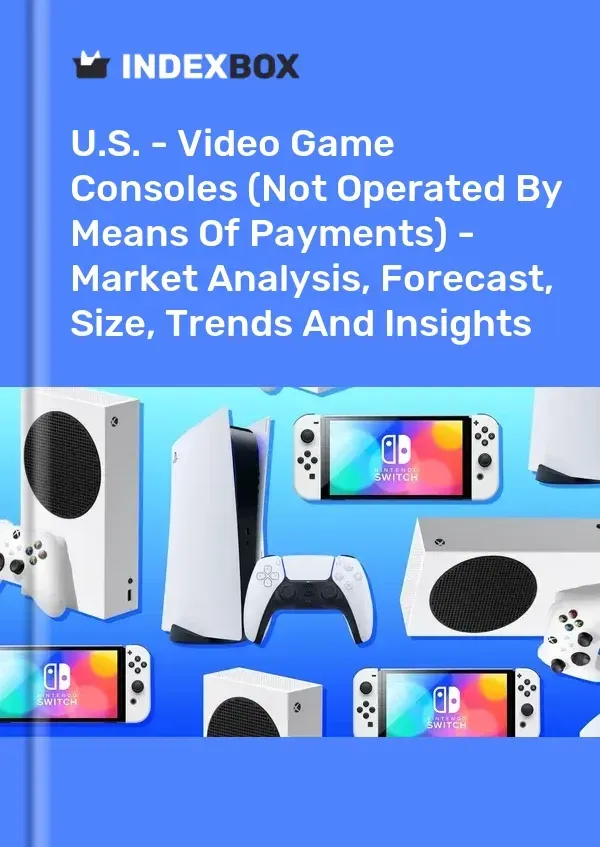In recent developments, video game console tariffs have drawn significant attention as a potential game-changer for the gaming industry. According to a warning from a US trade organization, American gamers may face staggering price increases of up to 69% on consoles if current tariff proposals proceed. The Consumer Technology Association (CTA) has adjusted its forecasts, indicating that the cost of importing tech goods could escalate dramatically, impacting everything from gaming systems to consumer electronics. As imports from China—which supply 87% of video game consoles—face tariffs as high as 145%, many are concerned about the implications for their wallets and overall consumer technology prices. This situation is particularly pressing given the anticipation surrounding the Nintendo Switch 2 release, which could be influenced by these tariffs and their resulting effect on video game price increases.
The looming issue of tariffs on gaming hardware has opened up a contentious dialogue about the future of console gaming in America. These trade restrictions pose a serious threat not only to the affordability of popular tech devices like gaming consoles but also to the broader economic landscape. The Consumer Technology Association’s revised estimates underline the potential financial burden on consumers due to increasing import costs and higher sales prices. As the launch of next-gen devices like the Nintendo Switch 2 approaches, stakeholders must grapple with the realities of these tariff policies and their ripple effects in the market. The discourse surrounding tariffs on tech imports reflects a critical intersection of gaming culture and international trade, raising questions about accessibility and the vitality of an industry steeped in innovation.
Impact of Video Game Console Tariffs on Consumers
The proposed video game console tariffs could significantly affect American consumers, leading to price increases that put high-quality gaming equipment out of reach for many. According to recent studies, prices could rise by as much as 69%, primarily due to the additional costs imposed on imported consoles, especially those manufactured in China. This increase threatens to shift the gaming landscape, making consoles like the Nintendo Switch 2 much less affordable for the average gamer, impacting sales and consumer engagement drastically.
The implications of such tariffs extend beyond just increased prices; they could also discourage consumers from upgrading their systems or purchasing new games. If prices soar, potential buyers may opt to delay their purchases or seek alternative gaming platforms, leading to a drop in demand for new releases. Moreover, with the Consumer Technology Association reporting a potential decline in overall consumer spending by up to $12 billion due to these tariffs, the full impact could ripple across the entire gaming industry.
Current Video Game Price Increase Trends
In the wake of the proposed tariffs, gamers are already noticing upward trends in video game prices. The Consumer Technology Association has analyzed how these price increases could be attributed not only to tariffs on tech imports but also inflation and production costs. As companies adjust to the new economic landscape, players may face substantial financial barriers when attempting to purchase the latest gaming consoles and titles.
These price hikes are not solely the result of tariffs; market dynamics such as demand for new releases like the Nintendo Switch 2 also play a crucial role. Analysts predict that as hardware costs rise, developers may be forced to adjust their pricing strategies, leading to higher costs across the board for video games. Consequently, this situation raises concerns about long-term consumer loyalty and market viability, especially if alternatives become more appealing.
The Future of Gaming: Nintendo Switch 2 Release
The highly anticipated release of the Nintendo Switch 2 has generated significant discussion amongst gamers, particularly in the context of ongoing tariff debates. Although Nintendo has confirmed the console’s launch date for June 5, uncertainties regarding tariffs could influence consumer sentiment and pre-order numbers. With millions already registered for the Switch 2 in Japan, the situation in the US market remains tense as potential price increases loom.
Market analysts have indicated that while excitement for the new console is high, concerns about its pricing structure due to the proposed tariffs may dampen initial sales. As fans look forward to experiencing the upgraded hardware and software capabilities, economic factors and the looming threat of a price increase could lead to hesitancy among consumers. Consequently, Nintendo’s strategy amidst these economic challenges will be critical to the success and sustainability of the Switch 2.
Economic Repercussions of Tariffs on Tech Imports
The proposed tariffs on tech imports are not just an issue for gamers; they carry significant economic implications for the broader U.S. economy. The anticipated decrease of $10.4 billion annually in consumer spending could shake the foundation of the tech industry, particularly for companies heavily reliant on imports. By discouraging purchases, these tariffs may lead to job losses, slower economic growth, and a challenging market environment for tech companies.
Moreover, the economic repercussions would trickle down to consumers, who could face not just inflated prices but also diminished product availability as companies adjust their supply chains. In a market where video games and consoles play a crucial role in consumer technology, these ramifications could stifle innovation and development in the gaming sector, creating a stagnant environment for both new technologies and gaming experiences.
Navigating Tariffs: The Role of Trade Organizations
Trade organizations such as the Consumer Technology Association (CTA) have been instrumental in raising awareness about the implications of video game console tariffs. By providing valuable insights and research into the potential impact of policy changes, these organizations help consumers and businesses alike understand the long-term effects on the industry. Their advocacy efforts are crucial in lobbying for fair trade practices that could ultimately benefit consumers and businesses.
As negotiations regarding tariffs and international trade continue, the input from trade organizations becomes increasingly critical. These entities not only inform policy but also advocate for a balanced approach that considers both economic realities and consumer interests. For example, if tariffs on imported consoles are relaxed or revised, it could open the doors for more competitive pricing strategies and consumer accessibility in the video game market.
Consumer Sentiment amidst Economic Change
Consumer sentiment plays a pivotal role in determining the future of the gaming industry, especially in times of economic uncertainty brought about by proposed tariffs. As prices rise, many gamers express concern over the sustainability of their favorite hobbies. This apprehension can lead to decreased spending, as players reconsider their gaming-related purchases, particularly for high-cost items such as consoles and games.
Surveys indicate that many consumers are becoming more price-sensitive in the light of potential price increases on video game consoles. This shift in consumer behavior could prompt companies to rethink their pricing strategies, leading to promotions or games bundled with hardware to entice purchasing decisions. Therefore, understanding consumer sentiment during these turbulent times is crucial for businesses aiming to thrive in a competitive marketplace.
The Influence of Inflation on Gaming Costs
Inflation has emerged as a significant factor affecting video game prices as proposed tariffs on tech imports loom. As the general cost of living rises, manufacturers and developers are left with no choice but to hike prices in order to maintain profit margins. This inflating cost structure impacts everything from console production to game development, leading to higher retail prices that consumers must pay.
With the Nintendo Switch 2 on the horizon, greater inflation pressures could lead to higher pre-order costs. Gamers could find themselves grappling with affordability issues, determining what price range is reasonable for a new console amid rising living expenses. Therefore, understanding how inflation intertwines with tariffs is essential for anticipating future trends in the gaming market.
Analyzing Pre-Order Trends for Upcoming Consoles
Pre-order trends for upcoming consoles such as the Nintendo Switch 2 reveal much about consumer confidence and market demand. With 2.2 million pre-orders registered in Japan alone, it’s evident that interest remains high despite the looming uncertainties surrounding tariffs. However, the potential for price increases due to the tariffs on imports may affect future pre-order numbers, particularly in the U.S. market.
As consumers consider whether to commit to pre-orders, the analysis of these trends becomes increasingly relevant. A significant drop in pre-orders may signal widespread concern over the expected price hikes and could prompt developers to reconsider their marketing strategies. In navigating these dynamics, the conversation surrounding pre-order trends will help stakeholders assess the viability of their consoles in an evolving marketplace.
The Role of Economic Forecasts in Video Game Pricing
Economic forecasts play a crucial role in shaping the pricing strategies of video game consoles. Reports from trade organizations indicate not only the impact of tariffs on tech imports but also provide insight into consumer behavior as economic landscapes evolve. Understanding these forecasts is essential for video game companies to navigate potential pricing pressures resulting from tariffs, inflation, and other economic factors.
As players await the Nintendo Switch 2 release, manufacturers must lean into economic trend analysis to set competitive pricing. By anticipating changes in the economy and consumer sentiment, companies can make informed decisions that ultimately benefit not just their bottom line but also their customers. Economic forecasts thus serve as a vital tool for companies to align their strategies for success in an uncertain marketplace.
Frequently Asked Questions
How will video game console tariffs affect prices for American players?
Recent proposals for video game console tariffs could lead to price increases for American players, with estimates suggesting a potential rise of up to 69%. As 87% of video game consoles are imported from China, current tariffs could significantly impact consumer prices.
Why are video game prices expected to increase due to tariffs on tech imports?
Tariffs on tech imports, particularly on video game consoles, are expected to lead to significant price hikes. The Consumer Technology Association has projected that the tariffs could impose a cost increase of 24% to 69% on consoles, which directly affects retail prices for gamers in the US.
What impact could tariffs have on the Nintendo Switch 2 release?
The ongoing tariff discussions have caused delays in pre-orders for the Nintendo Switch 2, highlighting how tariffs on imports can disrupt market availability. Despite the political climate, the Nintendo Switch 2 is still set to launch on June 5.
What are the economic implications of proposed tariffs on video game consoles?
Proposed tariffs on video game consoles could have a profound economic impact, potentially reducing the US economy by $10.4 billion annually. This includes decreased consumer spending and significant cuts in video game console imports.
What does the Consumer Technology Association say about video game console tariffs?
The Consumer Technology Association warns that proposed tariffs could lead to severe price increases in video game consoles, significantly affecting the gaming market and potentially raising prices by as much as 69%.
How many units of the Nintendo Switch 2 are expected to be sold after the tariff situation?
Despite the tariff situation impacting the gaming industry, Nintendo forecasts hardware sales of about 15 million units for the Switch 2 following its release, indicating strong demand from consumers.
Which countries are primarily affected by video game console tariffs?
China is the primary country affected by video game console tariffs, as 87% of consoles sold in the US are imported from there, facing tariffs as high as 145% under current proposals.
What was the effect of tariffs on consumer spending in the video game market?
If tariffs are implemented, analysts predict a potential decrease of about 73% in consumer spending on video game consoles, totaling around $12 billion in cuts, which would significantly impact the overall market.
How does US trade organization news relate to video game console tariffs?
Recent US trade organization news highlights the potential for significant increases in video game console prices due to upcoming tariffs, drawing attention to the financial strain on both consumers and the gaming industry.
What is the forecast for software sales of the Nintendo Switch 2 amidst tariff concerns?
Amidst tariff concerns affecting hardware sales, Nintendo expects the software sales for the Switch 2 to reach 45 million units, suggesting the company believes there will still be a strong market for games despite potential price increases.
| Key Points | Details |
|---|---|
| Tariff Impact | Proposed tariffs could increase video game console prices by 69%. |
| Import Dependency | 87% of video game consoles are imported from China, currently facing tariffs of 145%. |
| Economic Consequences | Potential reduction of the US economy by $10.4 billion per year due to tariffs. |
| Consumer Spending | Consumer spending on consoles could drop by up to 73%, translating to a loss of approximately $12 billion. |
| Nintendo Switch 2 Launch | Pre-orders delayed due to tariffs, with the launch date still set for June 5. |
| Sales Projections | Nintendo forecasts 15 million hardware sales and 45 million software sales for the Switch 2. |
Summary
Video game console tariffs are poised to significantly affect prices for American consumers, with estimates indicating a potential increase of 69%. The proposed tariffs not only pose a risk to console affordability but also threaten the broader economic landscape, projecting a $10.4 billion reduction in the US economy annually. As companies like Nintendo navigate these challenging circumstances, the implications of such tariffs underscore the importance of strategic economic considerations regarding technology imports.



